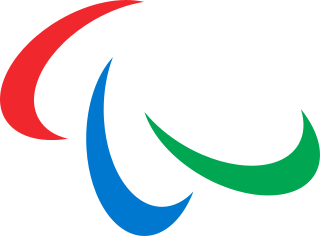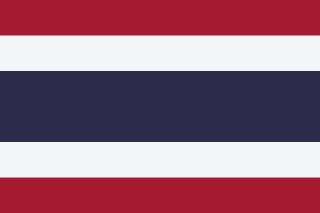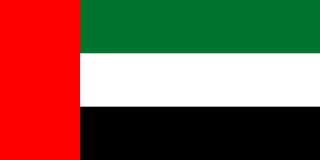SH2 is a Paralympic shooting classification.
This Paralympic shooting sport class is designated to shooters with a more severe impairment in the upper limbs, which necessitates them to use a shooting stand. Unlike the SH1 class they shoot with a rifle only and not with pistols. [1]
Sub-classifications A, B and C define wheelchair backrest height depending on back and pelvic strength per athlete. Ambulant or wheelchair using shooters regardless of sub-classifications A, B or C shoot together in this class.
Classification is handled by International Paralympic Committee Shooting. [2]
The IPC Shooting [3] Classification Rules and Regulations were published and came into force in May 2012. [4] The rules reflect the wording of the IPC Classification Code and are a revised version of the previous IPC Classification Rules.

Paralympic shooting, also known as shooting Para sport, is an adaptation of shooting sports for competitors with disabilities. Shooting is a test of accuracy and control, in which competitors use pistols or rifles to fire a series of shots at a stationary target. Each shot is worth a maximum score of 10.9 points. Athletes use .22 caliber rifles, pistols and .177 caliber air guns. Paralympic shooting first appeared in the Summer Paralympics at the 1976 Toronto Games.

The Winter Paralympic Games is an international multi-sport event where athletes with physical disabilities compete in snow and ice sports. The event includes athletes with mobility impairments, amputations, blindness, and cerebral palsy. The Winter Paralympic Games are held every four years directly following the Winter Olympic Games and hosted in the same city. The International Paralympic Committee (IPC) oversees the Games. Medals are awarded in each event: with gold for first place, silver for second, and bronze for third, following the tradition that the Olympic Games began in 1904.
T35 is a disability sport classification for disability athletics' running competitions. It includes people who have coordination impairments such as hypertonia, ataxia and athetosis. This includes people with cerebral palsy. The classification is used at the Paralympic Games. The corresponding F35 classification includes club and discus throw, shot put, and javelin.
T40 is disability sport classification for disability athletics, specifically athletes of short stature. Male athletes under 130 cm and female athletes under 125 cm can compete in this category.

Para-snowboarding classification is the classification system for para-snowboarding. The sport originally called Adaptive Snowboard is now practiced by hundreds of athletes around the world. The International Paralympic Committee (IPC) defines three classes: SB-LL for athletes with a physical impairment affecting one or both legs, and SB-UL for athletes with a physical impairment affecting one or both arms who compete standing. The sport made its official Winter Paralympic debut in the 2014 Winter Paralympics in Sochi, Russia.

Para-archery classification is the classification system for para-archery used to create a level playing field for archers with a different range of disabilities. Governance in the sport is through the International Archery Federation. Early classification systems for the sport were created during the 1940s and based on medical classification. This has subsequently changed to a functional mobility classification with the exception of blind archery.
Paralympic Shooting classification is the shooting classification in place for the Paralympic Games to help establish fair competition. Classification is governed by the International Paralympic Committee's IPC Shooting. While there are currently three classifications, there were originally five in international competitions. People with physical disabilities as defined by the International Paralympic Committee are eligible to compete.
Wheelchair tennis classification is the classification system for wheelchair tennis designed to bring fair play for all competitors. Classification is overseen by the International Paralympic Committee (IPC) and carried out by the International Tennis Federation (ITF).
SH1 is a Paralympic shooting classification.
LW12 is a para-alpine and para-Nordic sit skiing sport class defined by the International Paralympic Committee (IPC). An LW12 skier needs to meet a minimum of one of several conditions including a single below knee but above ankle amputation, monoplegia that exhibits similar to below knee amputation, legs of different length where there is at least a 7 centimetres difference, combined muscle strength in the lower extremities less than 71. For international competitions, classification is done through IPC Alpine Skiing or IPC Nordic Skiing. For sub-international competitions, classification is done by a national federation such as Alpine Canada. For para-alpine, this class is subdivided into two subclasses.: LW12.1 and LW12.2. A new sit-skier competitor with only national classification will compete as LW12.2 in international competitions until they have been internationally classified.

LW11 is a para-alpine and para-Nordic sit skiing sport class, a classification defined by the International Paralympic Committee (IPC for people with paralysis in the lower extremities and people with cerebral palsy that affects the lower half of the body. Outside of skiing, the competitor in this class is unable to walk. For international competitions, classification is done through IPC Alpine Skiing or IPC Nordic Skiing. For sub-international competitions, classification is done by a national federation such as Alpine Canada.

France competed at the 2016 Summer Paralympics in Rio de Janeiro, Brazil, from 7 September to 18 September 2016. The first places the team qualified were for four athletes in sailing events.

Germany competed at the 2016 Summer Paralympics in Rio de Janeiro, Brazil, from 7 September to 18 September 2016. The first places the team qualified were for four athletes in sailing events. They also qualified athletes in archery, cycling, equestrian, paracanoeing, paratriathlon, rowing and wheelchair basketball.

Thailand competed at the 2016 Summer Paralympics in Rio de Janeiro, Brazil, from 7 September to 18 September 2016.

Iran competed at the 2016 Summer Paralympics in Rio de Janeiro, Brazil, from 7 September to 18 September 2016.

The United Arab Emirates sent athletes to the 2016 Summer Paralympics in Rio de Janeiro, Brazil, from 7 September to 18 September 2016.

China has qualified to send athletes to the 2016 Summer Paralympics in Rio de Janeiro, Brazil, from 7 September to 18 September 2016. Sports China competed in include blind football, archery, boccia, cycling, goalball, judo, paracanoeing, sitting volleyball and wheelchair basketball.

Turkey has qualified to send athletes to the 2016 Summer Paralympics in Rio de Janeiro, Brazil, from 7 September to 18 September 2016. Sports the country qualified to compete in include 5-a-side football, archery, goalball, and wheelchair basketball.
Wheelchair sport classification is a system designed to allow fair competition between people of different disabilities, and minimize the impact of a person's specific disability on the outcome of a competition. Wheelchair sports is associated with spinal cord injuries, and includes a number of different types of disabilities including paraplegia, quadriplegia, muscular dystrophy, post-polio syndrome and spina bifida. The disability must meet minimal body function impairment requirements. Wheelchair sport and sport for people with spinal cord injuries is often based on the location of lesions on the spinal cord and their association with physical disability and functionality.
Keith Bremner was an Australian Paralympic Shooter, who participated in other sports at International Paralympic Games. He competed at four successive Summer Paralympics from 1984, FESPIC Games, International Stoke Mandeville Games, World Shooting Championships, Oceania and Korean Shooting Championships for the Disabled. He was Chairman and long-term member of the Paraplegic and Quadriplegic Association of New South Wales, and long-term member of Wheelchair Sports New South Wales.